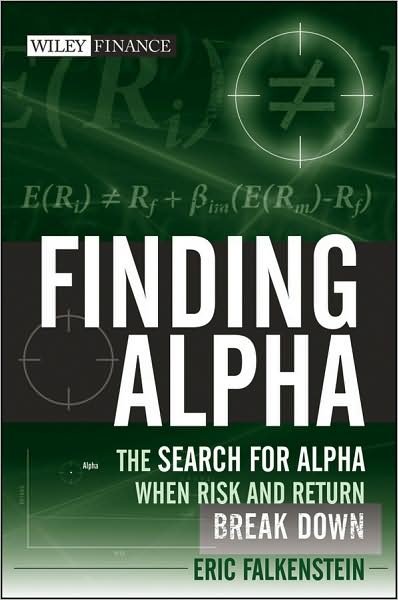I found this book both easy and hard to review. Easy, because it adopts two of my biases: Modern portfolio theory doesn’t work, and the equity premium is near zero. Hard, because the book needed a better editor, and plods in the middle. I don’t ordinarily do this, but I felt the reviews at Amazon were valuable, particularly the most critical one, which still liked the book. I liked the book, despite its weaknesses.
One core idea of the book is that risk is not rewarded on net. It doesn’t matter if you measure risk by standard deviation of returns, beta, or credit rating (with junk bonds). Junk underperforms investment grade bonds on average. Lower beta and standard deviation stocks overperform on average.
A second core idea is that some people are so risk averse that they only accept the safest investments, which leaves investment opportunities for those that are willing to compromise a little with credit quality or maturity. Moving from money markets to one year out is an almost riskless move for most, and usually adds a lot of excess return. Bond ladders do the same thing, though Falkenstein does not discuss those.
Also, the move from high investment grade to low investment grade does not involve a lot more investment risk, but it does offer more yield on a risk adjusted basis.
A third core idea is that equities, though more risky than high quality bonds, have not returned that much more than bonds when the returns are measured properly. See this post for more details.
A fourth core idea is that people are more willing to take risks to be wealthy than theory would admit. Most of those risks lose money on average , but people still pursue them.
A fifth core idea is that alpha is hard to define. Helpfully, Falkenstein defines alpha as comparative advantage. Focus on what you can do better than anyone else.
A sixth core idea is that leverage, however obtained, does not add alpha of itself. This should be obvious, but people like to try to hit home runs.
A seventh core idea is that when an alpha generation technique becomes well-known, it loses its potency.
An eighth core idea is that people are more envious than greedy; they care more about their relative position in this world than their absolute well-being.
One idea he could have developed more fully is that retail investors are easily deluded by yield. They underestimate the amount of yield needed to compensate for illiquidity, optionality, and default. Wall Street makes money out of jamming retail with yieldy investments that deliver capital losses.
Another idea he he could have developed is that strategies that lose their potency lose investors, and tend to become less efficiently priced, leading to new opportunities. Investment ideas go in and out of fashion, leading to overshooting and washouts.
How one achieves alpha is not defined — Falkenstein leaves that blank, because there is no simple formula, and I respect him for that. He encourages readers to devise their own methods in areas where there is not a lot of competition. Alpha comes from being better than your competition.
Summary
What this all says to me is that investors are too hopeful. They look for the big wins and ignore smaller ways to make extra money. They swing for the fences and get an “out,” rather than blooping singles with some regularity. I like blooping singles with regularity.
I recommend this book for quantitative investors who can find a way to buy it for less than $40. The sticker price is $95, though it can be obtained for less than $60. Try to find a way to borrow the book, through interlibrary loan if necessary — that was how I read Margin of Safety by Seth Klarman. Klarman’s book is not worth $1000. Falkenstein’s book is not worth $95. Falkenstein’s very good blog will give you much of what you need to know for free, and even more than he has covered in his book.
This book would also be valuable for academics and asset allocators wedded to Modern Portfolio Theory and a large value for the equity premium, though some would snipe at aspects of the presentation. Parts of the book are more rigorous than others.
If you still want to buy the book at the non-discounted price, you can buy it here: Finding Alpha: The Search for Alpha When Risk and Return Break Down (Wiley Finance)
PS: Unless I state otherwise, I read the books cover-to-cover, unlike most book reviewers. The books are often different from what the PR flacks encourage reviewers to think. If you enter Amazon through my site and buy anything, I get a small commission.




